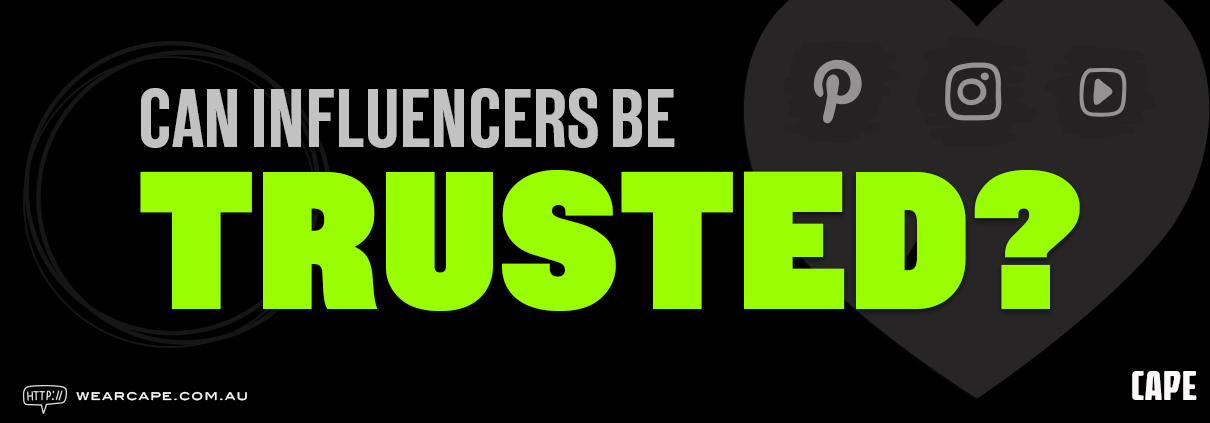Can Influencers Be Trusted?
Influencers have become big business in recent years and like all things on the up, there are mixed reports about their value, how influential they really are and how trustworthy they are. So, it’s perfectly natural that you should be sceptical about just how influencers help brands. Here we take a look at some of the main issues and concerns around influencers to help you draw your own conclusions as to whether influencers are worth it.
How have influencers changed marketing?
The obvious place to start is with the influence that influencers have had on marketing and the way brands promote themselves. While brands have always sought celebrities to be the face of their marketing campaigns, the term ‘influencer’ as we understand it today didn’t really come in to being until 2015. Brands quickly came to realise the power of influential social media users and bloggers in promoting the goods and services they offer, and in 2016 influencer marketing was a global business worth $1.7m USD. Fast forward just three years and you’ll see that by 2019 the global market for influencers had risen to $6.5m USD – almost 4 times as much.
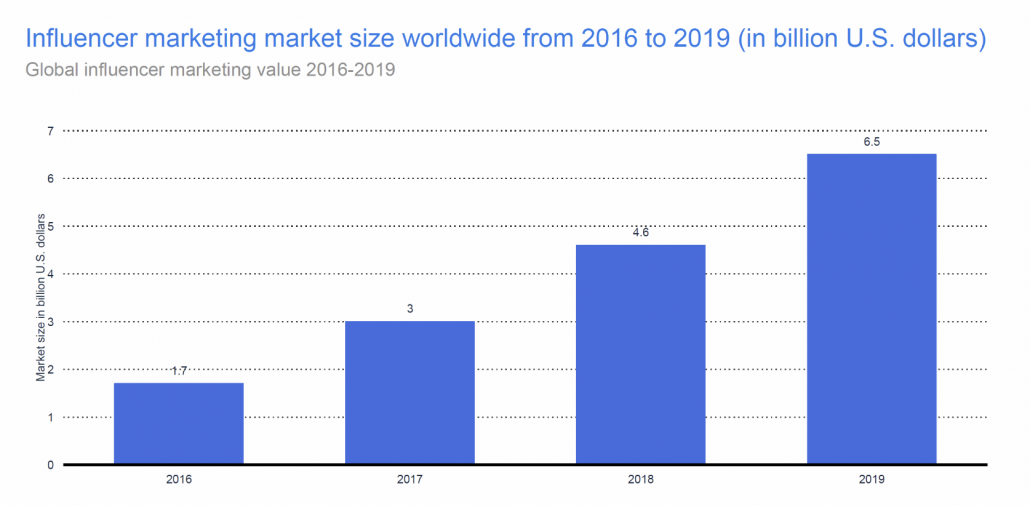
This increase was driven by results and a complete change to the user experience. Since the introduction of smartphones, the amount of time the average person spends scrolling through their social media feeds has grown exponentially and marketing managers have tried to get in on the action. Early methods were as basic as employing people to post information about products or services in the hope that exposure would drive engagement and sales. When that failed many brands took to spending money to boost ads to get them seen. After all, this was how advertising had always worked, right? The more you paid the better exposure you received and the greater your returns were. But the game had changed. Users were no longer sitting passively waiting to be sold to. Their device was their space where they could choose the content they wanted to see and to interact with, and if brands wanted to grab their attention something different was required. Simply placing an ad in somebody’s feed became a sure-fire way to have it ignored. Brands realised that what they needed was to have somebody else speak for them. Someone who had the attention of their target audience. And those people were influencers.
But how do I know which influencers I can trust?
Look down the list of the most prominent influencers in Australia and you’ll notice it’s littered with big name stars such as Dwayne Johnson, Beyonce, Kylie Jenner and Arianna Grande to name but a few. These are huge megastars with massive sway over their followers. That’s why they’re the most expensive influencers. But they and their advisers are also acutely aware of cancel culture and they choose the brands to promote carefully. So, for these top end influencers, you generally know you’re on safe ground, but you pay a premium for that privilege. If your budget doesn’t stretch to those types of influencers, all is not lost. You simply need to find a reliable agency for influencers that will be able to put you in touch with those who are the right fit for your brand.
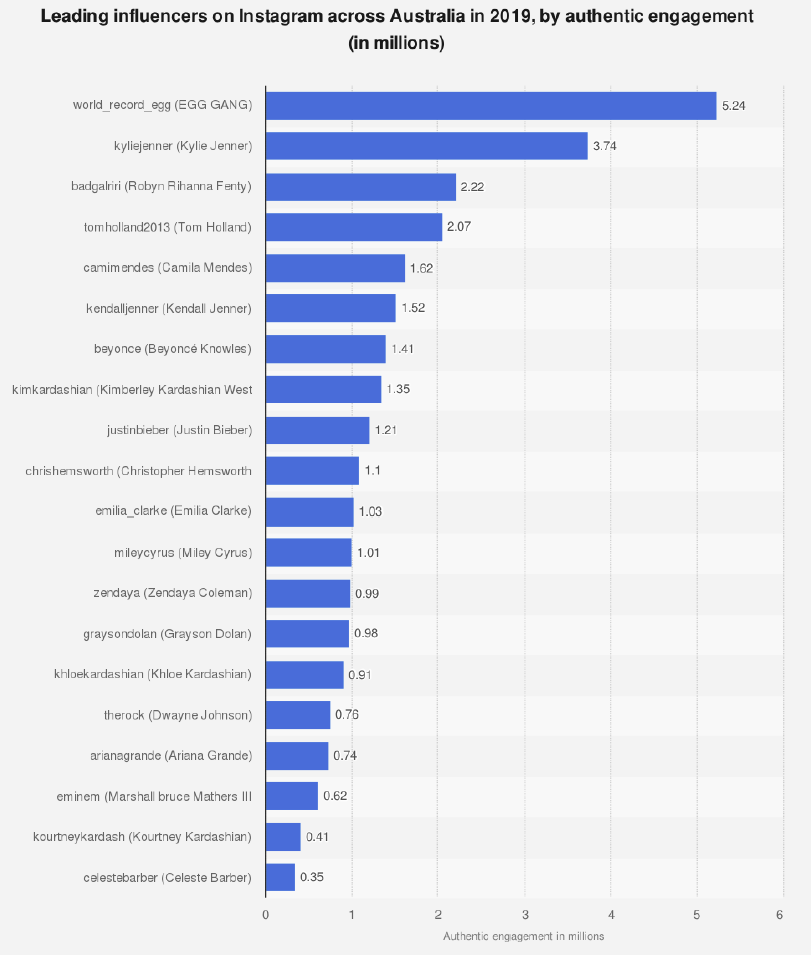
Some influencers buy followers to boost their credibility and these are ones that you want to avoid as their followers are not really potential customers. Others employ bots to make their following look bigger than it is and again, these are not actually influencers as they are not influencing anybody, they are just taking your money and taking you for a ride. One way to spot whether an influencer account has fake followers is to look for follower growth anomalies. That is, does its follower rate grow at the expected level? Any influence who sees exponential growth in their follower rate with no explanation (ie they hit the headlines by appearing on reality tv) is almost certainly paying for fake followers. And this is a growing problem for brands that employ them. In 2018 the percentage of Instagram influencers displaying follower growth anomalies in the US, UK, France and Germany was just over 20%. In 2019 that figure rose to over 30%. So, it’s crucial that you only use influences who have a genuine following. But with around two-thirds of influencers (and rising) using fake followers to boost their rankings, spotting the real from the fake can be tricky as well as costly. One way to do that is to take a look at an influencers’ followers to check for the tell-tale signs. Do they have followers with no profile pic, no bio and who make no comments? Do they have followers that appear to make irrelevant comments or ones that make no sense? These are signs that those followers are fake and that any comments made are inauthentic. Taking that time to check out influencer accounts before you part with your cash is a worthwhile exercise in the long run.
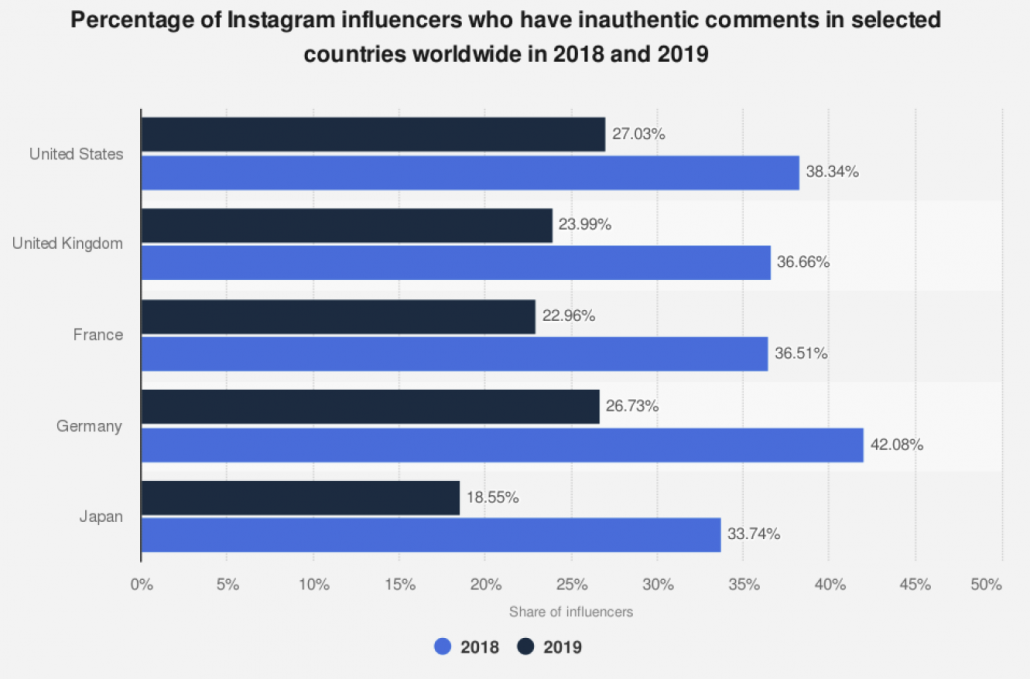
Trying to navigate those waters alone, though can be a rough ride. In a survey of marketing managers, 50% said one of their biggest challenges when selecting influencers to work with was being able to spot fake followers. Because nobody has the budget for ads that don’t get seen, do they? Well, you would think not but in fact the average Facebook ad posted by brands is seen by just 5% of their followers, with Twitter even lower at just 3.6% of followers even being shown the post. And that brings us to the next highest concern for marketers – algorithms. Love them or loathe them, algorithms are here to stay and although it sometimes seems that they exist simply to make your job harder, the truth is that the sheer number of posts going out on social media sites every day is so vast that there simply aren’t enough hours in the day to show every post to every follower. So, to increase your engagement you need to beat the algorithms. And to beat the algorithms you need to understand how they work.
Let’s look at it from Facebook’s point of view. They want users to engage with posts – that’s where they get their income. But to ensure they get maximum ROI they need to sift through the billions of posts out there and make sure the best performing ones, the ones with most engagement, are shared with as many people as possible. If a post gets plenty of engagement it is shown to more and more and users as it is deemed to be popular. But fail to engage the audience and it disappears into the ether. One of the best ways to increase engagement is to employ influencers. But, like you, social media companies are targeting genuine followers who make authentic comments so they adapt their algorithms to try to root out accounts with fake followers. So finding genuine influencers with a strong following is a great way to increase engagement and boost brand awareness.
with a strong following is a great way to increase engagement and boost brand awareness.
How much do influencers cost?
Considering that only 3.6% of your Twitter followers even see each tweet you send out – it becomes obvious that most of your social media budget is probably expensive in terms of ROI, even if the amount you spend on it is low enough that nobody ever really questions it. But is any anonymous marketing really worth the time, effort and spend? Wouldn’t you rather your employees were doing something more constructive than shouting into a chasm? Decent influencers have found a spot away from that chasm and are engaging with real live people.
There is a cost to employing influencers. You can’t get away from that fact. But consider the flip side. If an influencer came to you and said they would promote your product completely free of charge, would you take them seriously? Probably not. You’d most likely think they were a chancer. Employing reliable influencers costs money because they achieve results.
But there are different ways of negotiating with influencers and compensating them for their work. Many brands (54%) pay a flat fee to an influencer for each post. This puts you in control of how much you spend and how often you post so there is no risk of costs running away. Others offer free products and services to influencers. This can help reduce your costs as well as adding credibility to the brand if the influencer is seen to be using your brand in the future meaning your ROI is further increased. Another common method is to pay influencers an affiliate commission based on the leads or sales they generate. If a post really flies, then this can be the most expensive in terms of dollars spent but when looked at as ROI you are only spending once you know you’ve sold.
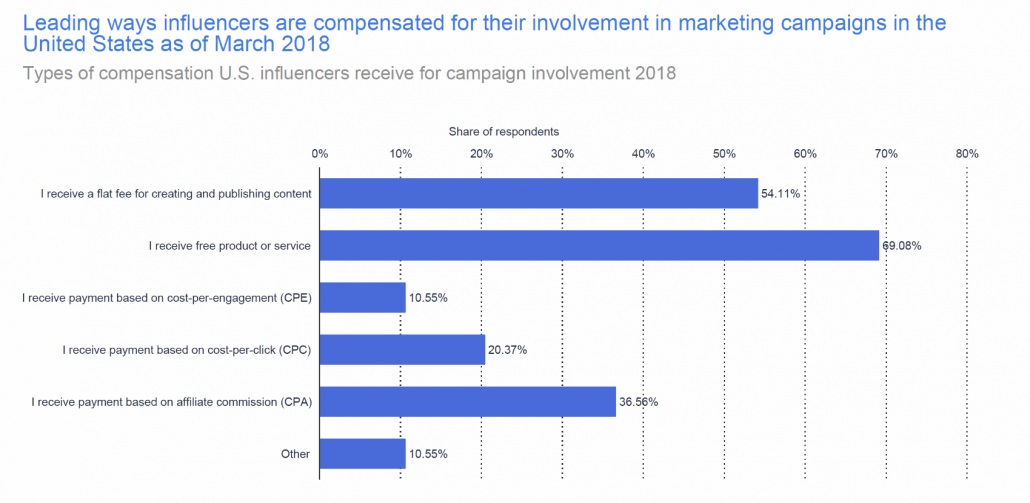
A 2019 survey showed that 19% of US companies allocated up to $1000 USD to influencer marketing, 18% allocated $100k – $500k and a further 17% allocated $10k – $50k. Over half of US companies committing that amount of their marketing budget to influencers tells its own story. Digital influencer marketing can be profitable and affordable, but they key is choosing the right influencers, and knowing what to look for when it comes to identifying authenticity and follower engagement.
What products and services do influencers promote?
There is no stock answer to this question. Provided it’s on-brand with their image and your target audience, influencers will promote pretty much anything. A survey in the US in 2018 showed that 60% of the total amount spent on influencer endorsed products were on those that cost less than $100 and 31% was on products priced between $100 – $499. So, 91% of all products sold which can be directly linked to influencers, cost less than $500 each. This tells us that influencers are speaking to normal everyday people. The people that the majority of brands are trying to reach. And more than that, it shows that people are listening. They are being influenced and responding to the call to action. For products costing $5000 or more, that figure drops to 7%. Considerably less than the 91% buying at the lower end of the market, but with big ticket items, you don’t expect to sell in such huge volumes and a 7% increase in sales can have a huge impact on the bottom line for businesses trading in more expensive items.
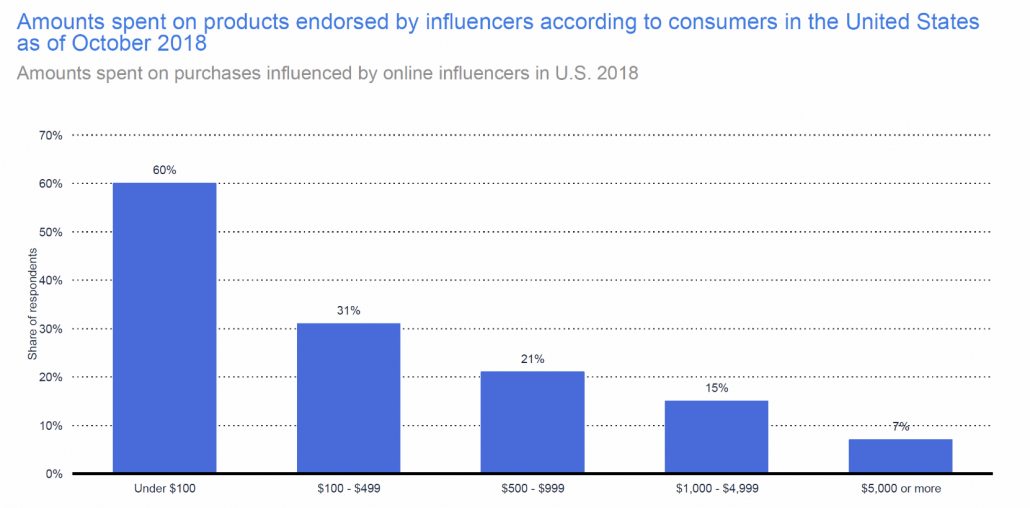
So, can influencers be trusted?
Of course not all influencers can be trusted and on first impressions it is not always clear which ones are trustworthy. Spotting fake followers and inauthentic engagement is the number one concern in most industries, and certainly the most common issue we deal with. But by using an agency for influencers you can allow the experts who know the best influencer networks to worry about which ones are reliable, leaving you to focus on the key concepts of marketing such as understanding your target market, their pain points and how your product or service solves their problems.
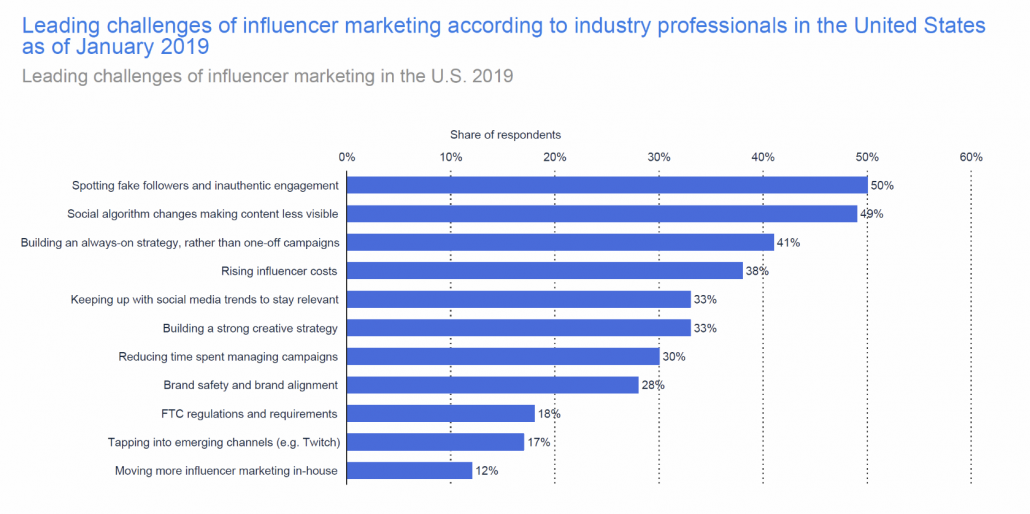
Influencer marketing is the modern way to place your brand in front of those most likely to become paying customers. It’s a method of selling without selling and meeting your target market where they want to be contacted. Influencers can be trusted to engage, entertain and convince your audience. You just need to know where to look for the best ones.
Schedule a meeting with us to discuss how we can ensure you find the most authentic influencers to promote your brand.

Lee J.
I am a creative writing graduate with 7 years experience in copywriting, proofreading and editing. I have written and edited web content, blogs and social media posts for clients all over the world.

